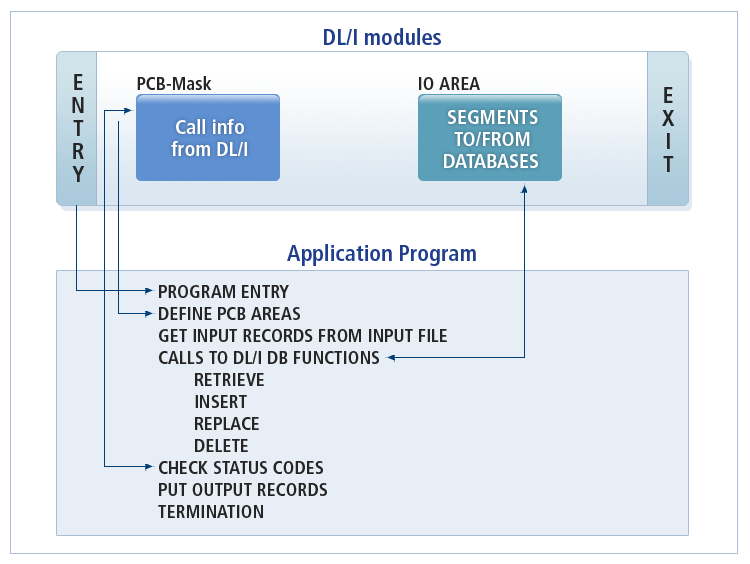Introduction
This chapter describes the concepts and structure of OpenFrame OSI application programing.
1. Overview
Developers can configure transaction services by developing new applications that the OSI system runs or by migrating applications that the existing IMS/DC runs. Many resources that are provided by the OSI system provide the same services as those of IMS/DC.
Based on DL/I function, OSI programing constitutes the work program by combining the features of each function. Refer to Application Interfaces for detailed information about types and features of DL/I function.
2. Database
The type of database that the IMS/DC system uses is a hierarchical database management system. It saves and manages clients' work data structurally. This database is called IMS/DB. Call the standard DL/I function when applications that are run in the IMS/DC or pure batch applications access this database.
By using DL/I, a standard application interface that each program language provides, applications can use the standard DL/I functions.
OSI rebuilds the database structure on UNIX and integrates with OpenFrame HiDB to provide the same features as IMS/DC.
3. Data Communications
IMS/DC provides a system server (Control Region) and a user server (Dependent Region) to view the results of the data that applications processed..
OSI provides features of IMS/DC by integrating with Tmax and efficiently handles transactions. To make clients' programs that are run in the IMS/DC equally run in the OSI, OSI provides the same interface as the DL/I interface that IMS/DC provides.
By using DL/I, user programs, that MPP and BMP in a user server (Dependent Region) run, can be run in the OSI following a simple migration.
4. Applications
OSI provides the same features and infrastructure that IMS/DC provides so, applications can run in the same way as they do in IMS/DC.
Unlike Non IMS/DC applications, IMS/DC applications must have a PSB (Program Specification Block). PSB functions as an interface to run the services that IMS provides for applications. Those services include how to send a message to a terminal, how to access a database, IMS commands, and IMS service Calls. OSI applications can determine how to run IMS services through PSB.
PSB and applications are concurrently loaded by the OSI system. The execution module of the OSI implements what applications request by using the Call function that is run within the applications. Each MPP application implements OSI features (DL/I Call function, commands, etc.) through a MPP-typed user server and for this, required system definitions must be registered in advance. The system can be defined by using the system macro that IMS/DC used.
Batch applications are run in a different way to the above case. To run batch applications in the OSI system, a BMP (Batch Message Processing Region) server is needed. This server can handle the functions of applications that are requested using the batch JOB (JCL start).
When an application is created, define PCB in the ENTRY statement. Through this defined PCB, features of the OSI system can be used. PCB is a control block that the system provides to communicate with VIEW about OpenFrame HiDB, message sources, or message destinations. Up to 400 PCBs can be used in OSI.
The following describes PCB for applications.
-
Database Program Control Block (DB-PCB)
Describes how applications read information that is stored in the database. Even the same database can be read differently depending on how it is described in the DB-PCB.
-
IO Program Control Block (IO-PCB)
OSI typically operates using the terminal and applications that are run online require IO-PCB.
-
Alternative Program Control Block (ALT-PCB)
Use ALT-PCB when a message is forwarded to other programs or terminals within applications. ALT-PCB can be used when changing the destination.
|
For more information about PSB and DBD, refer to OpenFrame HIDB Guide. |
The following shows the general workflow of applications described earlier.
